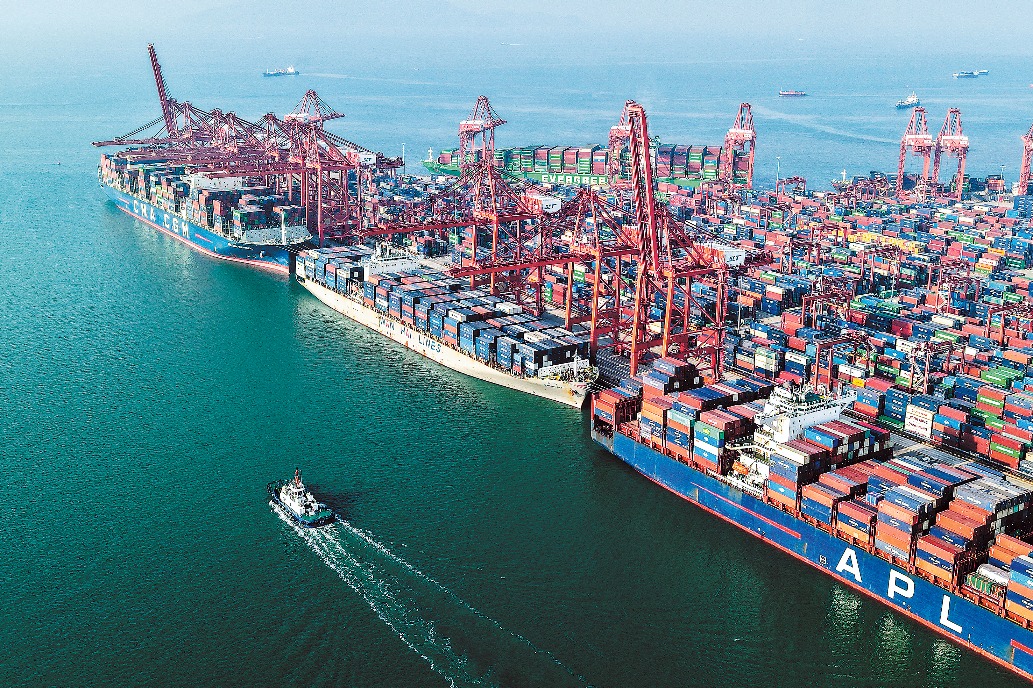Automated terminal enters service at Beibu Gulf Port
By Shi Ruipeng | chinadaily.com.cn | Updated: 2022-06-30 17:29

The Qinzhou terminal at Beibu Gulf Port in the Guangxi Zhuang autonomous region began full operations on Tuesday, becoming China's first sea-rail intermodal automated container facility.
The rear of the dock yard is adjacent to the central railway station to complete the sea-rail system. It relies on information exchanges and sharing between sea and railway transport systems and improves the integrated service capacity of combined modes of shipping.
The layout of the wharf is U-shaped, which is a first globally. With more loading and unloading points, it can accommodate more gantry cranes in the yard to improve efficiency. The wharf uses low-speed gantry cranes, which reduces equipment costs, construction investment, equipment energy consumption and wear and tear by more than 30 percent.
The project is divided into two phases. These automatic container berths No 7 and No 8 in the Dalanping South Operation Area of the Qinzhou terminal are the first phase of the project. Both are 100,000-ton container berths with a total shoreline length of 518.5 meters, and both are designed to handle 1.02 million standard containers per year.
The second phase, including two 200,000-ton container berths with a handling capacity of 1.6 million standard containers per year is under construction. It is scheduled for completion in 2023.
The new container terminal will create a seamless connection of sea-rail combined transport, greatly improve the core competitiveness of Beibu Gulf Port and provide significant support for high-level construction of the New International Land-Sea Trade Corridor.
Wang Huaiyu contributed to this story.
- Shanghai Disney Resort reopens
- Expert: Removal of healthcode asterisk beefs up virus containment precision
- China Daily deputy editor-in-chief recalls work experiences telling HK stories
- Xi inspects Wuhan, stresses China's self-reliance in science and technology
- Shanghai Disneyland reopens after COVID-caused closure
























